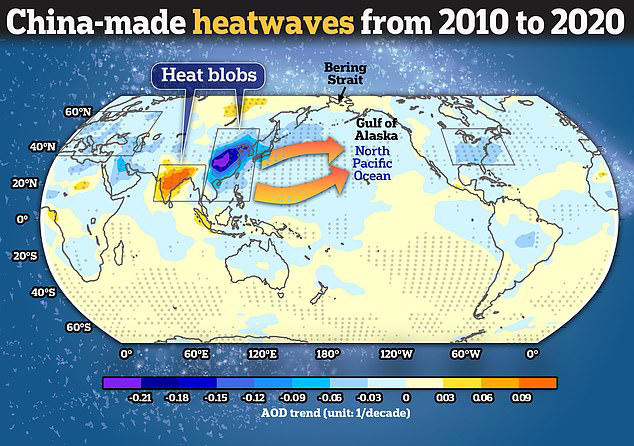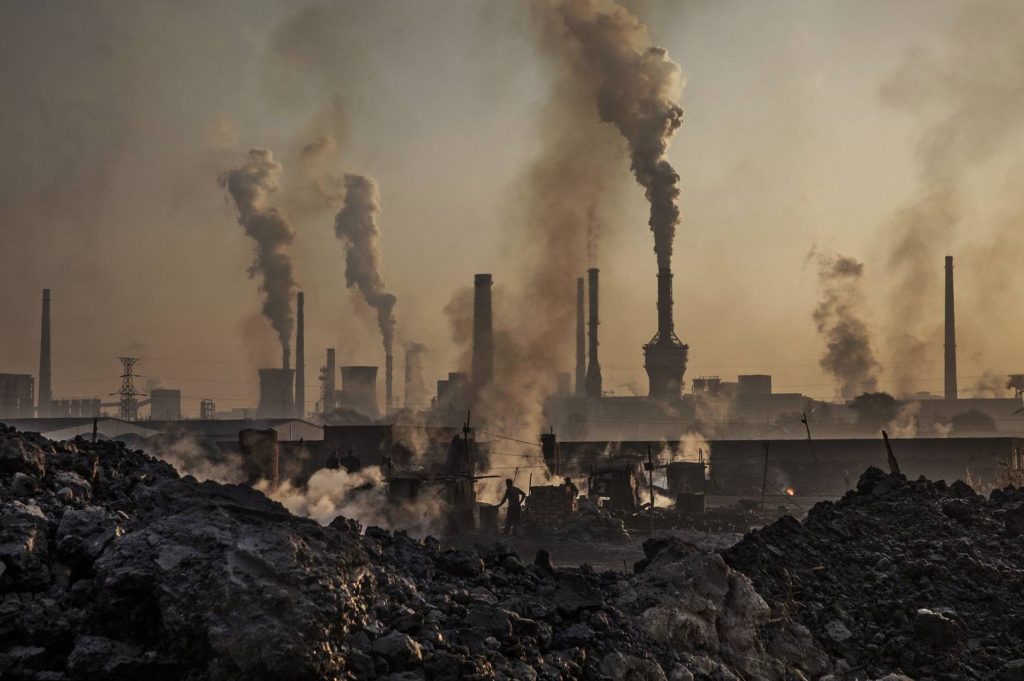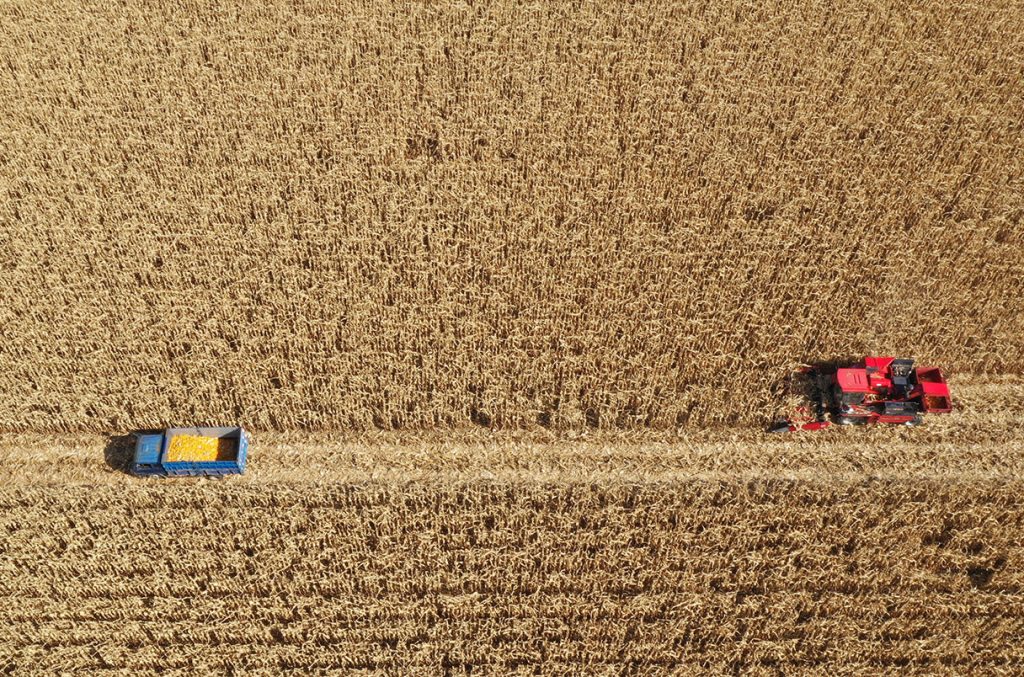CO2 spiking! Levels are rising 10 times faster than ever seen in 50000 years
Carbon dioxide levels in our atmosphere are rising at an alarming rate, 10 times faster than any time in the last 50,000 years, according to a groundbreaking study led by researchers from the University of St. Andrews and Oregon State University. This research highlights the dramatic pace of current climate change, offering valuable insights by comparing it to historical climate patterns.
Kathleen Wendt, the lead author of the study and an assistant professor at Oregon State University's College of Earth, Ocean, and Atmospheric Sciences (CEOAS), emphasizes the significance of these findings. "Studying the past teaches us how today is different. The rate of CO2 change today really is unprecedented," Wendt explains. Their research discovered that the rate at which carbon dioxide is rising today, driven primarily by human activities, is 10 times higher than the fastest natural rates ever recorded.
The research team analyzed ancient Antarctic ice, which has trapped gases in air bubbles for hundreds of millennia. By drilling cores up to two miles deep and examining trace chemicals, scientists have been able to reconstruct historical climate data. These records revealed that during the last ice age, which ended around 10,000 years ago, there were periods of significant carbon spikes. However, the previous measurements lacked the detail necessary to fully understand these changes.
Insights from Ancient Ice and Modern Implications
The international team focused on samples from the Westdioxide istic Ice Sheet Divide, discovering that rapid CO2 rising occurred during cold intervals in the North Atlantic, known as Heinrich Events. These events are linked to abrupt global climate shifts and are marked by dramatic collapses of ice sheets, leading to a cascade of environmental changes.
Christo Buizert, co-author of the study and an associate professor at CEOAS, describes these Heinrich Events as "truly remarkable." They likely resulted from a dramatic collapse of the North American ice sheet, triggering a series of changes in tropical monsoons, Southern Hemisphere winds, and substantial releases of CO2 from the oceans.
The most notable natural rise in carbon during these periods was by about 14 parts per million over 55 years, occurring approximately every 7,000 years. In stark contrast, today's human-driven CO2 rise will reach this magnitude in just five to six years. The study's findings suggest that during natural CO2 spikes, stronger westerly winds crucial for deep ocean circulation facilitated rapid carbon releases from the Southern Ocean.
Dr. James Rae from the University of St. Andrews School of Earth and Environmental Sciences, a co-author of the study, elaborates on the broader implications. "These Heinrich Events kick off an astonishing sequence of rapid shifts in climate around the world," Rae notes. They start with weakening of the North Atlantic's circulation, leading to rapid cooling in Northwest Europe, sea ice expansion, and disruptions to tropical monsoons. Additionally, these events alter oceanic and atmospheric circulation around Antarctica, causing significant CO2 releases. The study, published in the journal Proceedings of the National Academy of Sciences, also addresses future climate concerns. Previous research suggests that climate change will strengthen westerly winds over the next century. If this occurs, the Southern Ocean's capacity to absorb human-generated carbon will be diminished, posing significant challenges for managing global CO2 levels.
"We rely on the Southern Ocean to take up part of the carbon dioxide we emit, but rapidly increasing southerly winds weaken its ability to do so," Wendt warns. This insight underscores the urgency of addressing human contributions to climate change to mitigate these unprecedented rates of atmospheric CO2 rise.
By understanding these ancient patterns and their modern parallels, the study provides a crucial perspective on how unique and accelerated today's climate crisis is, emphasizing the need for immediate and sustained action to curb carbon emissions.
For further information, visit: https://www.ecowatch.com/
Read our previous articles: First 5G-enabled Surgery performed by Doctor
Hitchhiking Aliens: New Research into Panspermia
What Is Inside the Moon? (scitechupdate.com)
Two new COVID variants, called 'FLiRT' in the United States
Sex and Gender Studies: Unlocking Equality and Social Justi
https://scitechupdate.com/index.php/social-media-negative-effects-teenagers-brain
https://scitechupdate.com/index.php/japans-co2-absorbing-concrete-home
https://scitechupdate.com/index.php/zinc-should-get-from-food-not-supplements
https://scitechupdate.com/index.php/nobel-prize-in-physiology-or-medicine-awarded-to-pioneers-of-covid-19-vaccines
https://scitechupdate.com/index.php/scientists-say-this-blood-type-increases-risk-of-early-stroke
https://scitechupdate.com/index.php/the-harmful-impact-of-the-r-word-why-it-needs-to-be-retired
https://scitechupdate.com/index.php/three-nobel-prizes-try-to-cover-all-of-science
https://scitechupdate.com/index.php/the-most-populated-cities-in-the-world
https://scitechupdate.com/index.php/aromas-and-odors-decoding-the-insect-brains-interpretation
https://scitechupdate.com/index.php/pig-kidney-xenotransplantation-is-thriving-in-human-body
https://scitechupdate.com/index.php/uk-plans-to-build-an-85-million-laser-a-million-billion-billion-times-brighter-than-the-sun
https://scitechupdate.com/index.php/huaweis-new-smartphone-challenger-to-apple
https://scitechupdate.com/index.php/zuckerberg-introduced-a-new-virtual-keyboard-where-bosworth-typed-119-words-per-minute
https://scitechupdate.com/index.php/venus-colony-by-2050-ocean-gate-co-founders-bold-plan-a-thriving-1000-people-venus-colony-by-2050
https://scitechupdate.com/index.php/israel-advances-cancer-treatment-with-genomic-profiling/https://scitechupdate.com/index.php/stomach-cancer-causes-signs-and-treatment/
https://scitechupdate.com/index.php/james-webb-telescope-captures-newborn-sun-like-star
https://scitechupdate.com/index.php/oxygen-28-unstable-magic-isotope-that-defies-expectations






